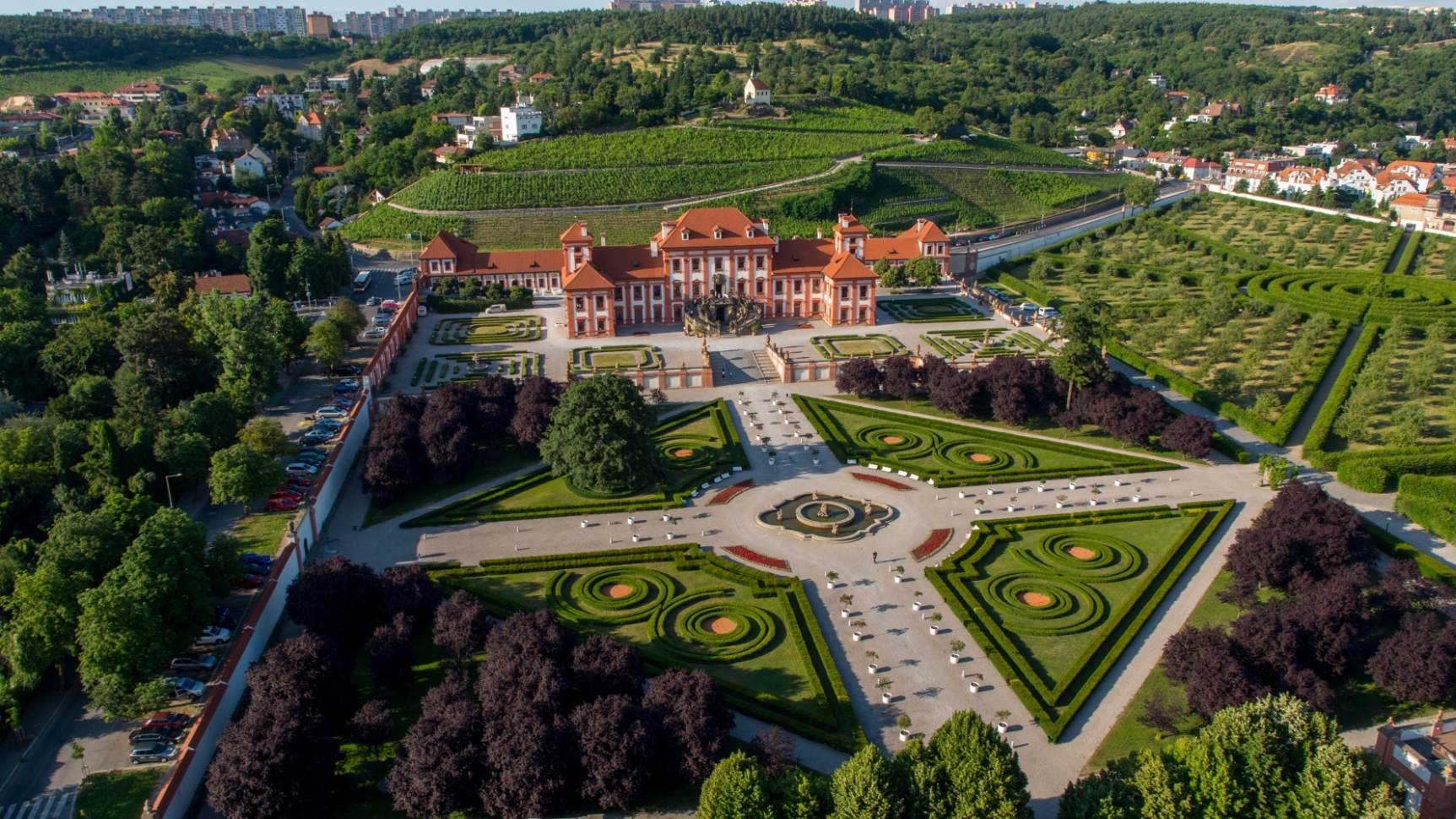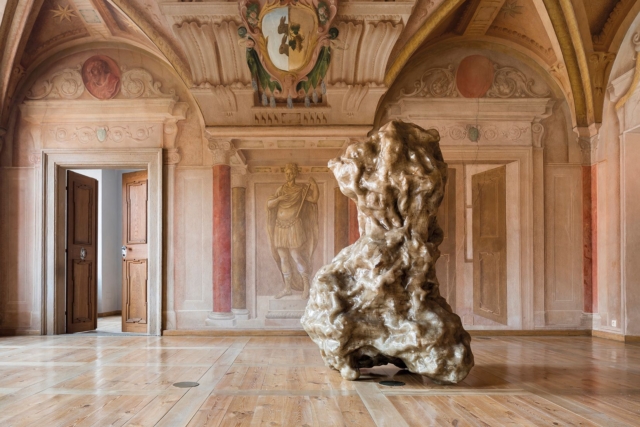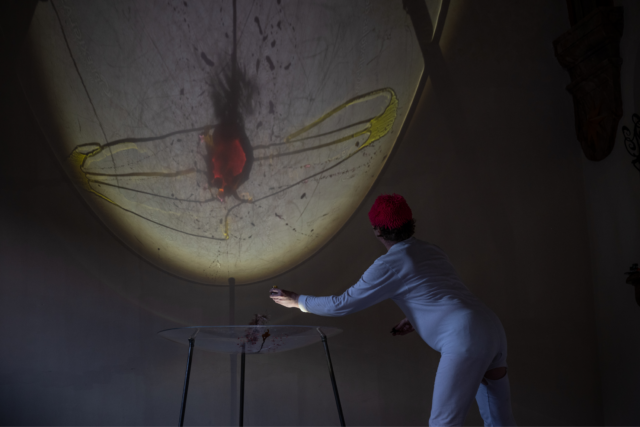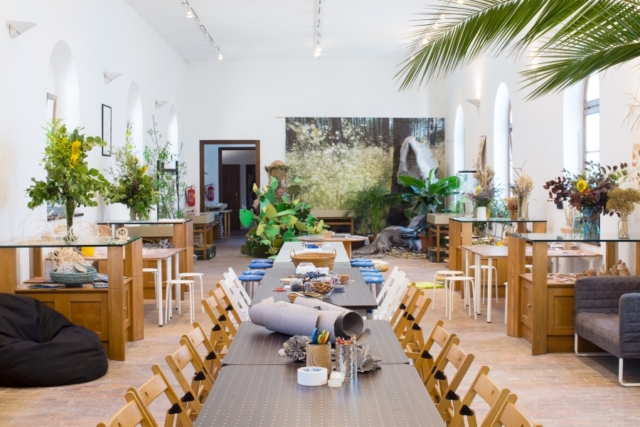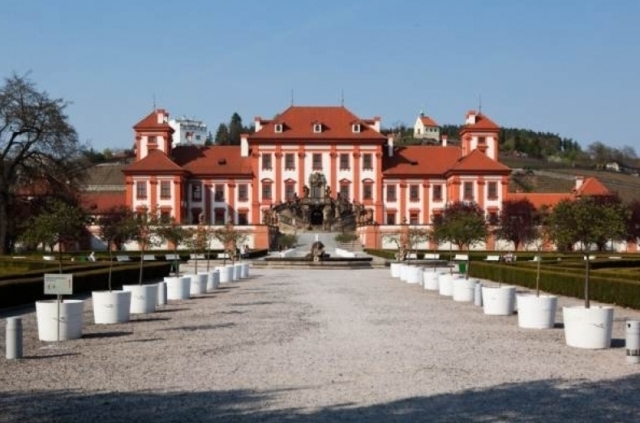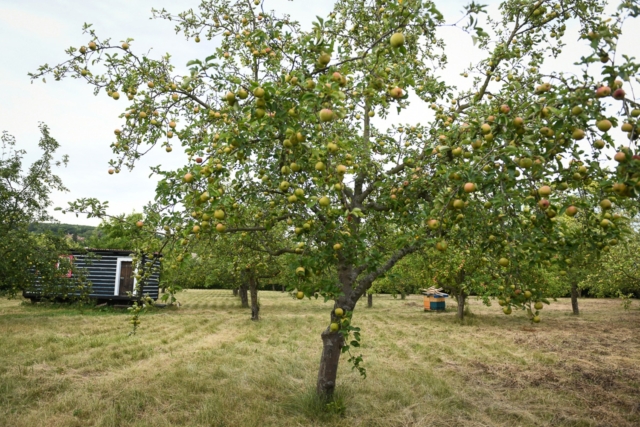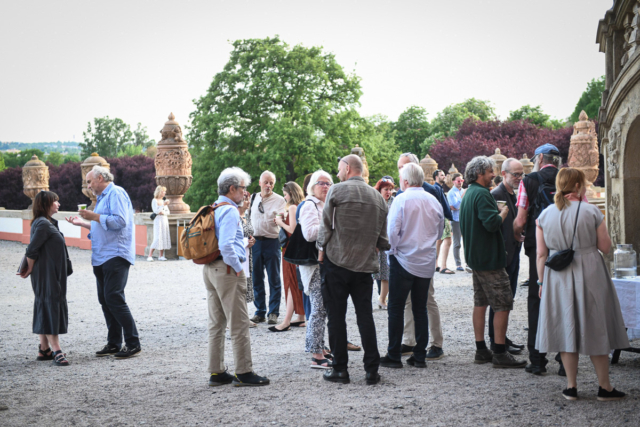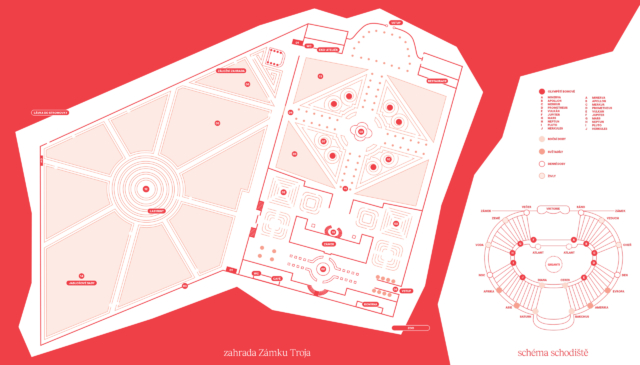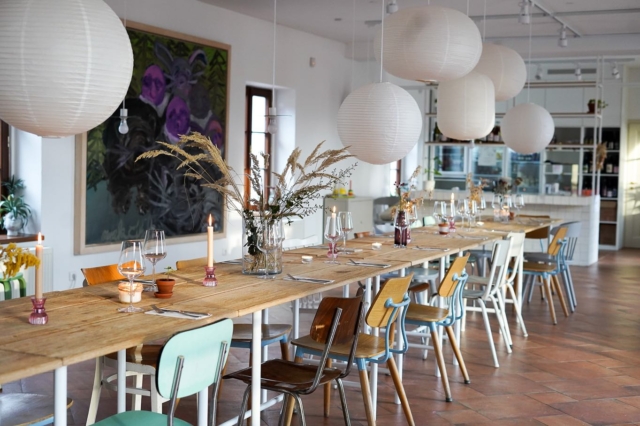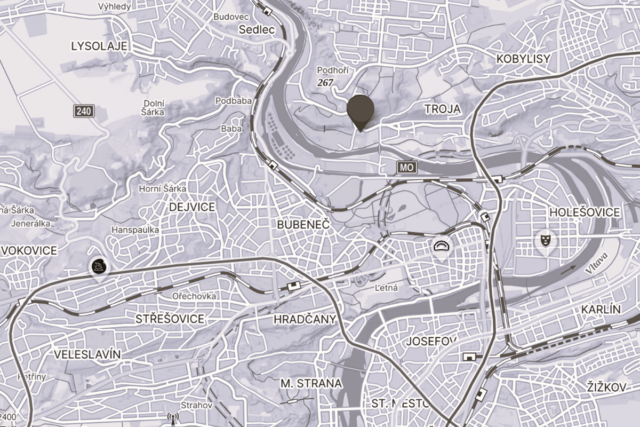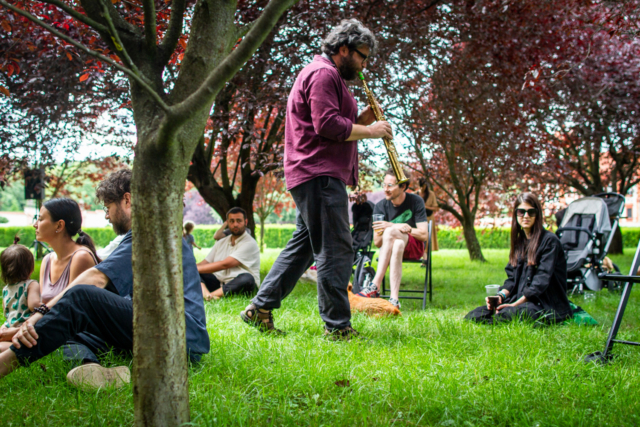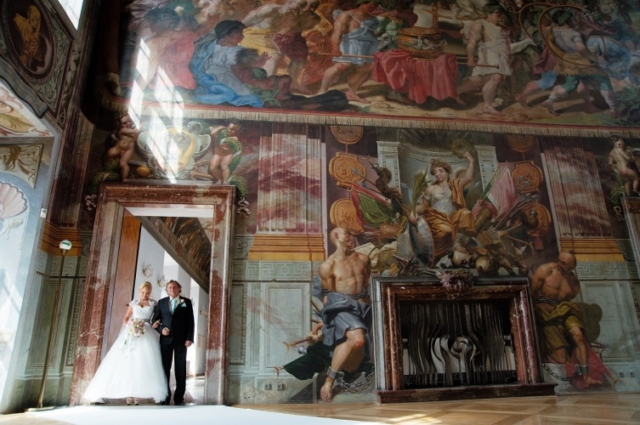Troja: Labyrinth and Paradise
Prague City Gallery manages Troja Château, a unique building in the Czech Republic, which corresponds in type to Roman suburban villas. It includes gardens and fruit tree orchards; it is a sophisticated architectural and landscape composition, set on the bank of the Vltava River, forming a direct visual link with Prague Castle. The architect of the building was Jan Baptista Mathey.
Troja Château is used by the GHMP for cultural, exhibition and educational purposes and cooperates with a number of entities operating in the Troja basin (The Botanical Garden, boroughs, The Institute of Planning and Development, universities, etc.). The Château offers a good opportunity for local and international dialogue between professionals, lay people and the local community interested in visual arts, music, natural sciences, humanities and ecology.
Prague City Gallery offers here a new form of cooperation with not only the public, but also with various organisations and individuals, as an example of active thinking about the possible use of cultural heritage, which is given maximum care in terms of protection, but which is also used in a creative and innovative way.
In 2023, we started to implement a comprehensive programme focused on Troja Château which, on the one hand, exploits the unique character of this Baroque monument and, on the other hand, responds to the situation around the environment and climate change. The intention of the whole concept is to develop the theme of conscious conservation of heritage-protected monuments, cultural (tangible and intangible) heritage, sustainability in the city and meaningful leisure time. We are building on the BIO TROJA project, which originated in early 2020 as a response to the environmental situation and the climate situation in general. The concept referred to possible forms of interaction and convergence between art and natural sciences against the backdrop of climate change.
For several years now, the Château’s orangery has been home to the Eco-Studio, operated by the GHMP Education Department, which serves as a place for gallery visitors to develop their creativity, to reflect creatively on the visual arts and to relax outside the touristy part of Prague. The studio is intended for children, all types of schools, families, adults, seniors, visitors with specific needs, as well as other groups and individuals. In this seasonal creative space, educational programmes are carried out that convey and present the exhibitions and collections of the GHMP as well as Baroque art in connection with the history of the Château. Here, interdisciplinary overlaps are developed and programmes are carried out with a focus on the ecological and environmental context in relation to art.
In 2024, we will launch several new projects – we will gradually start using the apple orchard as a starting point for art intervention projects, interactive zones and seasonal works; the sculptural intervention will consist of creating new vases for the Chateau, which will appear directly in its interior or among the unique terracotta vases on the balustrades. In collaboration with the Jakost publishing house, young artists will work, during weekend workshops, on a book, mapping the fantastic gardens of Troja Château for The Book That Has No Name Yet. On that occasion they will try out all the techniques of artistic research. December will see the second edition of the hugely successful Saint Lucy festival of light which, like last year, we will be running in collaboration with Signal Festival and Art for the City. In the main hall of the Château, current and past DAMU (theatre faculty) students will present new performances under the banner of Merry Moments – their last year’s performance Triomphez captivated audiences and necessitated the addition of further performances.
We also cooperate with the organisers of other events that take place in Troja – Day for the Troja Basin, the Grape Harvest Festival, Populate the Jungle… Troja Château is a unique place where you can experience the connection between past and contemporary art, relax in the garden with a picnic basket or just wander around the Vltava River and enjoy the birds singing.

